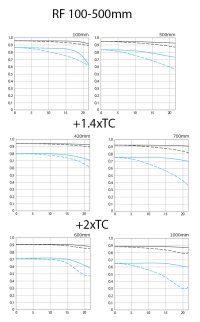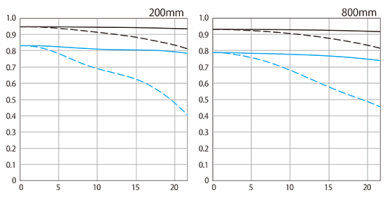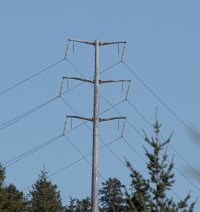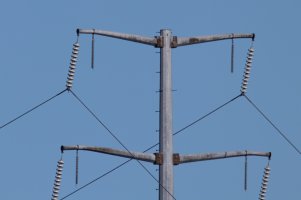He did note that the R7 AF with the lens was much better in good light and that is just the nature of the R7. One observation didn't quite make sense. He was discussing "brightness bleed" and assigning the problem to the lens, but then went on to say that he had to decrease exposure to resolve the problem. If decreasing the exposure resolves the problem, the lens is not the issue other than that it may report lower brightness than it actually delivers so the camera overexposes. I find that with both the R5 and R7 pulling the exposure down 1/3 to 2/3 stop from default generally results in a more flexible raw file with most lenses unless I am using spot exposure. That is to say that both cameras tend to overexpose highlights more than I would like with evaluative metering set at default exposure.Some comments and questions the next morning.
1. RF 200-800mm on FF versus RF 100-500mm on R7
He complains that the AF of the 200-800 on the R7 isn't good, and I wouldn't want that lens on an APS-C anyway, so let's consider its designed for FF, and what it does as is in my last post is to give a similar field of view range as the RF 100-500mm on APS-C. So, I'd like to see a), a comparison of the IQ of 100-500mm on an R7 or lower Mpx APS-C vs 200-800mm on the R5 and lower Mpx FF. b) a comparison of the AF at 800mm on the R5 etc with AF on the R7 etc.
2. He doesn't recommend the use of extenders on the 200-800 but does show some good images. However, how do the images at 1120mm and 1600mm compare with that at 800mm in terms of additional real resolution. I would guess not much in practice.
I think his conclusion that it wont replace his 100-500 but he will keep it as a useful extra is fair comment. But, what I really want to know is it even significantly useful if you have an R7 if that plus the RF 100-500 covers what the R5 or R6 Plus 200-800 can do in practice for IQ and AF for flying birds? Lugging around and packing a larger lens, the poorer AF, poorer IQ zoomed in and lower magnification at mfd are negatives. But, the R7 isn't my first choice for BIF, and from what I see from him the 100-500 on the R5 or other FF are better than 200-800mm
Lastly, the teleconverter results are encouraging.
Upvote
0




